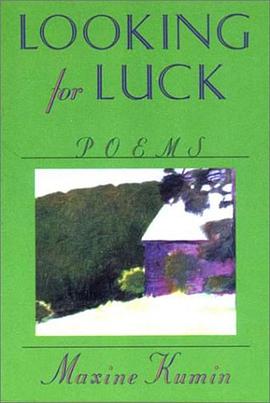

具體描述
Amazon.com On September 5, 1938, DeFoe Russet helps hang a new show at a tiny Nova Scotia museum. He doesn't even pay much attention to the eight new paintings from Holland; he'll have time enough to take them in later on. After all, the buttoned-down 25-year-old is one of two people at Halifax's Glace Museum paid to watch out for the art, to stop people from getting too close to it. But DeFoe also knows that "as a guard you had emotions. You got to know paintings better than you got to know the people in your life. Speaking for myself." The other guard--and the man who raised him after his parents died in a zeppelin crash when he was 9--is his Uncle Edward. Edward is certainly not the steadiest fellow employee or familial influence. He devotes his nights to drinking, poker, and charming women at the Lord Nelson, the hotel where both men live, and his days to hangovers, somnolence, and generally harassing museumgoers. DeFoe, at least, is a model employee. Yet his personal life cannot be quite so regulated, and for the last two years he has been frustrated in his relationship with a caretaker at the local Jewish cemetery. He seems to expend most of his energy anticipating Imogen Linny's moods, assessing the power of her headaches, and banging his head against her nocturnal mixed messages and philosophizing. As the novel progresses, Imogen also grows increasingly obsessed with one of the newly arrived paintings, Jewess on a Street in Amsterdam. Soon, DeFoe puts his career in jeopardy for Imogen, stealing the picture for her--though this is only one of the mysteries at the heart of Howard Norman's strange and startling third novel, The Museum Guard. Through DeFoe's eyes, we, too, begin to understand the allure of the painting, in which a woman pushes a bicycle and holds a loaf of bread, the shop window behind her filled with toothbrushes. "The toothbrushes made me laugh. They quickly put me in a good mood," he recounts. "But then I looked close up at the Jewess's face; I was sunk from that mood in a second. Because it struck me as a face of desperate sadness. Those are my own words. I stood as close to the painting as I could without touching it. Me--a guard. I reached out then and touched the woman's face. And I did not flinch back my hand or warn myself." Howard Norman's protagonist would probably be able to pull himself back; this is a man who calms himself down by ironing endless white shirts. And he fully intends to keep the same job for the next 30 years. But those around him lack his instinct for order and seem to be pushing him toward the grand, self-destructive gesture. News of Hitler's advances on Europe also make him realize "how small Halifax had become." Imogen, too, feels her life a confinement, but her reaction is more extreme. She literally wills herself to become the woman in the painting. In one bizarre scene--and Norman has a knack for turning the extreme into the everyday--DeFoe finds her filling in for the usual museum guide. Speaking in an unconvincing Dutch accent and dressed as the Jewess, Imogen tells a group of increasingly puzzled women her version of events. "While he painted me, we fell in love. Just weeks before, with my parents' death, I had become estranged from my very soul. My marriage to Joop Heijman helped me to reconcile. And now you know my deepest secrets." Edward's assessment is as wry as ever, and spot-on: "Life in Halifax used to be so simple, didn't it, DeFoe?" As Imogen's identification grows, she is resolved to go to Amsterdam and "reunite" with the painter. Howard Norman writes with such persuasive oddity that it's no surprise when those closely allied to the Glace Museum find themselves moving this futile, intrusive, and dangerous plan along. The Museum Guard is an unsettling examination of a group of people (with very odd names) who let themselves get too close to art--and perhaps to life. --Kerry Fried From Publishers Weekly The worlds of Norman's novels (The Northern Lights; The Bird Artist) are always slightly askew. Like trompe l'oeil paintings, they contain a veil of mystery spread over realistic settings. DeFoe Russet, like most of Norman's other protagonists, is a minimally educated man of simple ambitions, limited horizons and little self-knowledge. An orphan whose parents died in a dirigible crash when he was eight, DeFoe is raised in a Halifax hotel by his incorrigibly alcoholic and amorous Uncle Edward, a guard in the town's art museum. High-school dropout DeFoe becomes a guard there, too, and he goes stoically through his days caring for his perennially derelict and self-destructive uncle. DeFoe also tries to nourish his failing relationship with Imogen Linny, the caretaker at the Jewish cemetery, whose debilitating headaches have increased since she's become obsessed with a painting on loan to the museum. Imogen is convinced that she is the figure in the painting, titled Jewess on a Street in Amsterdam, and is determined to travel to that city to play out the drama of "her soul's estrangement and reconciliation." But the year is 1938 and Hitler is on the march. Norman again creates eccentric characters whose oddities seem quite natural to others in their community. But the antic charm and mordant humor of his earlier work is somewhat lacking here, and the reader is not so willing to suspend disbelief. Despite a histrionic denouement, the narrative feels muted, and Imogen, in particular, never earns our sympathy. Yet in the end, Norman's message about the disparity between the world of art, which can be captured and controlled, and the real world, with its emotional chaos and physical danger, carries a haunting intensity. Copyright 1998 Reed Business Information, Inc. See all Editorial Reviews
著者簡介
圖書目錄
讀後感
評分
評分
評分
評分
用戶評價
相關圖書
本站所有內容均為互聯網搜索引擎提供的公開搜索信息,本站不存儲任何數據與內容,任何內容與數據均與本站無關,如有需要請聯繫相關搜索引擎包括但不限於百度,google,bing,sogou 等
© 2025 book.quotespace.org All Rights Reserved. 小美書屋 版权所有




















